Best Merino Wool Hoodie Base Layers For Hiking 2024
Last Updated: February 29, 2024
Merino Wool Hoodies For Base Layering in Warm, Moderate, and Cold Temps
A merino wool hoodie base layer is excellent for hiking and backpacking. Merino is soft, breathable, lightweight, natural, comfortable, versatile, moisture-wicking, thermoregulating, and odor-resistant. What’s more, a hoodie is the best possible base layer configuration, as it protects your head from cold and UV exposure.
This is data-based guide. We assess merino hoodies objectively, based on their fabric weight and composition above all else. How to choose the right merino wool hoodie is largely a matter of pairing the correct fabric with the expected temperature range. And that’s why we sort each hoodie into one of three distinct categories: warm weather, moderate weather, and cold weather. Build out a quiver so you always have access to the exact right base layer for the job.
More buyer considerations can be found at the bottom of this article. And while you’re here, don’t miss our guides to alpaca hoodies, hiking shirts, lightweight fleece jackets, hiking pants, and hiking shorts.
You make Adventure Alan & Co possible. When purchasing through links on our site, we may earn an affiliate commission at no additional cost to you. Here’s why you can trust us.
Merino Wool Sun Hoodies For Warm Weather
- Editor’s Choice: Outdoor Vitals Tern
- Highest UPF: Zpacks Mirage
- Best Henley Hoodie: Voormi River Run
Merino Wool Hoodies For Moderate Weather
- Editor’s Choice/Best Value: Ridge Merino Solstice Lightweight
- Well-Rounded: Smartwool Active Hoodie
- Well-Rounded: Arc’Teryx M’s Ionia/W’s Lana
- Balaclava Hood: Outdoor Research Alpine Onset
Merino Wool Hoodies For Cold Weather
- Editor’s Choice Ridge Merino Convict Canyon
- Best 100% Merino: Ibex Indie Hoodie
- Warmest: Smartwool Classic Thermal Merino
- Best Value: Janji Rover
Merino Wool Hoodie Base Layer Comparison Table
| Fabric Weight (gsm) | Price ($) | Materials | |
| Voormi River Run | 100 | 139 | 52% Merino, 48% Polyester |
| Outdoor Vitals Tern | 115 | 85 | 63% Merino, 29% Poly 8% Nylon |
| Zpacks Mirage | 135 | 100 | 96% merino, 4% Spandex |
| Ridge Merino Solstice Lightweight | 145 | 85 | 87% Merino, 13% Nylon |
| Arc’teryx Ionia/Lana | 145 | 140 | 87% Merino, 13% Nylon |
| Smartwool Active | 150 | 100 | 56% Merino, 44% Recycled Polyester |
| Outdoor Research Alpine Onset | 150 | 119 | 47% Merino, 47% Recycled Polyester, 6% Elastane |
| Ridge Merino Convict Canyon | 155 | 150 | 54% Polyester, 38% Merino, 8% Spandex |
| Janji Rover | 170 | 128 | 55% Nylon, 37% Merino, 8% Spandex |
| Ibex Indie Hoodie | 170 | 185 | 100% Merino |
| Smartwool Classic Thermal | 250 | 145 | 100% Merino |
Best Merino Wool Sun Hoodies
Outdoor Vitals Tern Ultralight Merino Wool Hoodie
Choose the Outdoor Vitals Tern because it is the lightest garment in the genre, weighing just 5.4 oz for a men’s medium. This is due primarily to the thin/cool/breezy 115 gsm fabric, but also the slimmer fit, meaning there is simply less fabric. The merino-poly-nylon blend decreases dry time, increases durability, helps bump its UPF rating up to 36, the second highest in our guide. This is an excellent merino wool sun hoodie for summer. It’s also very comfortable, good looking 0n-body, soft-yet-textured, and a truly exceptional garment to wear.
- Price: $85
- Fabric Weight: 115 gsm
- Garment List Weight: 5.4 oz (Men’s M)
- Materials: 63% Merino, 29% Poly 8% Nylon
- UPF Rating: 36
- Pros: Ultralight. Great value. Good UPF rating. Odor-resistant. Comfy. Soft. Stretchy. Good looking. Quick drying. Breathable.
- Cons: Unisex only sizing.
Zpacks The Mirage Merino Sun Hoody
Choose Zpacks The Mirage because it is one of the only merino wool sun hoodies with a UPF rating, and among those that are rated, it scores highest at UPF 40. We love that it has a quarter zip for extra venting. The 135 gsm is a very versatile late-spring-through-early-fall thickness. With 96% merino, it is also the most odor-resistant and most moisture wicking, albeit, slowest to dry.
- Price: $100
- Fabric Weight: 135 gsm
- Garment List Weight: 8.2 oz (Men’s M)
- Materials: 96% merino, 4% Spandex
- UPF Rating: 40
- Pros: Zipper venting. Stretchy. Breathable. Good value. High UPF rating. Thumb loops. Odor-resistant. Comfy. Soft. Very wicking.
- Cons: Slower dry time. Unisex only sizing.
Voormi River Run Hoodie
Choose the Voormi River Run, because it is the thinnest, coolest, and most breathable merino wool sun hoodie, perfect for the dog days of summer. The added polyester increases the quick-dry capabilities, which is important for hiking in hot, sweaty conditions. It’s not UPF-rated, but any fabric will block some UV. We conservatively estimate it to be in the UPF 10-15 range.
- Price: $139
- Fabric Weight: 100 gsm
- Garment List Weight: 7oz (Men’s L)
- Materials: 52% Merino, 48% Polyester
- UPF Rating: Unrated
- Pros: Coolest. Great breathability. Quick dry. Henley button collar. Thumb loops.
- Cons: Not UPF rated.
Best Merino Wool Hoodies For Moderate Conditions
Ridge Merino Solstice Lightweight Wool Hoodie
Choose the Ridge Merino Solstice because it is a highly regarded merino wool sun hoodie with a UPF 30+ rating, all for a very generous price of just $85. The 13% nylon composition adds durability, speeds up drying, and helps up the UV protection. Our main knock is that the 145 gsm fabric is a bit heavy and warm for a true summer sun hoodie. A number of hoodies in this guide with 145-150 gsm are marketed as either all-season or winter base layers, so it’s a bit odd to see the Solstice framed as it is. And that’s why we put it in the midweight category, rather than the sun hoody category.
- Price: $85
- Fabric Weight: 145 gsm
- Garment List Weight: 8.7 oz (Men’s M)
- Materials: 87% Merino, 13% Nylon
- UPF Rating: 30
- Pros: Exceptional value. UPF-rated. Hood cinch. Thumb loops. Versatile. Odor-resistant. Comfy. Soft.
- Cons: Midweight fabric thickness masquerading as lightweight
Arc’teryx M’s Ionia & W’s Lana Merino Wool Hoody
Choose the Arc’teryx Men’s Ionia or W’s Lana for a versatile all-arounder from a brand known for absolutely premium construction and attention to detail. That being said, it’s much more expensive than the Ridge Merino Solstice, which has the exact same fabric composition – 87% merino, 13% nylon. While this is obviously a great merino wool hoodie, you’re definitely paying extra for the bird logo. Another point of confusion is that while they appear to be the exact same garment with the same fabric composition and overall design, the men’s version is $20 more expensive than the women’s. The women’s version has thumb loops, but men’s does not. Thus the Lana is a much better option.
- Price: $140/$120
- Fabric Weight: 145 gsm
- Garment List Weight: 7.9 oz (Men’s M)
- Materials: 87% Merino, 13% Nylon
- UPF Rating: Unlisted (implied 30)
- Pros: Versatile. Odor-resistant. Comfy. Soft. High quality.
- Cons: Expensive. M’s version is more expensive for no reason and lacks thumb loops.
Smartwool Active Hoodie
Choose the Smartwool Active (formerly known as the “Sport” line) because it is a great all-arounder at a fair price from a renowned performance-merino brand. The 150 gsm weight is comfortable as a 3-season base layer from fall through spring. The merino-polyester blend is quick drying and breathable, and utilizes recycled materials. Somewhat oddly, the women’s version is markedly different. It’s called the “Active Ultralite” which is similar to “Active” in terms of its chassis, but subs in TENCEL – made from eucalyptus pulp – instead of recycled polyester. TENCEL is softer and more sustainable than poly, but also less durable, provides less UV protection, and is slower to dry.
- Price: $100
- Fabric Weight: 150 gsm
- Garment List Weight: 8.5 oz Men’s M
- Materials: 56% Merino, 44% Recycled Polyester
- UPF Rating: Unlisted
- Pros: Good all-around. Great value. Versatile. Comfy. Soft.
- Cons: Generally too warm for summer. Zippered side pocket may interfere with hip belt. Substantially different men’s/women’s versions.
Outdoor Research Alpine Onset Merino 150 Hoodie
Choose the Outdoor Research Alpine Onset if you like a balaclava hood. This is the only bala in our round up of midweight hoodies, and it is exceptional as a cold-weather base layer for this reason. It does well under helmets, hats, and more hoods. The hinged design is nice, as it allows for a great deal of adjustability, depending on how you’d like to wear it. the merino, poly, elastane blend is stretchy and quick drying, great for all outdoor sports.
- Price: $119
- Fabric Weight: 150 gsm
- Garment List Weight: 9 oz (Men’s M)
- Materials: 47% Merino, 47% Recycled Polyester, 6% Elastane
- UPF Rating: 30
- Pros: Balaclava hood. Good all-around. Versatile. Quick Dry. Stretchy. Thumb loops.
- Cons: Generally too warm for summer. Less than 50% merino.
Best Merino Wool Hoodies For Cold Conditions
Ridge Merino Convict Canyon Merino Wool Hoodie
Choose the Ridge Merino Convict Canyon because it is constructed with Polartec Power Wool, a uniquely effective bi-component knit. Think of it like a grid fleece where the gridded next to skin layer is all merino wool for softness, moisture wicking, and warmth, and the flat faced exterior is all polyester (durable, quick drying). This combination contrasts every other textile in this guide, because those are blends with the strands of each fiber fully mixed and integrated together in the fabric. Power Wool places each material where it performs best, deriving more performance synergy than when merino and poly and fully mixed. And on top of that, you also get a quarter zip, front chest pocket, thumb loops, and balaclava hood. This is a killer merino wool hoodie for use from mid-fall through mid-spring.
- Price: $150
- Fabric Weight: 155gsm
- Garment List Weight: 9.7 oz (Men’s M)
- Materials: 54% Polyester, 38% Merino, 8% Spandex
- UPF Rating: Unlisted
- Pros: Polartec Power Wool has great wicking, breathability, quick dry, and stretch. Zipper vent. Thumb loops. Balaclava hood.
- Cons: Less than 50% merino. Expensive.
Ibex Indie Hoodie
Choose the Ibex Indie Hoodie because it is the only 100% merino wool hoodie in the 170 gsm weight class. That makes it warmer than similar offerings from other brands, at the expense of slower dry times. As such, it will perform optimally in cold-dry climates. For any hoodie over 150, we love the addition of a quarter zip and are pleased to see it here. Notably, this is the most expensive merino hoodie in our guide. But if you want a soft, luxurious, no-plastic, highly odor-resistant layer for use from late fall through early spring, look nowhere else!
- Price: $185
- Fabric Weight: 170 gsm
- Garment List Weight: 10.3* oz (Men’s M) (*estimated)
- Materials: 100% Merino
- UPF Rating: Unlisted
- Pros: Warm. Soft. Highly odor-resistant. Comfy. Breathable. Quarter zip. Eco-friendly.
- Cons: Very expensive. Slow dry time. Cold-weather use only.
Smartwool Classic Thermal Merino Base Layer Hoodie
Choose the Smartwool Classic Thermal because it’s the warmest base layer hoodie you’ll ever need at 250 gsm and constructed with 100% merino. Seriously, it’s so warm that we wouldn’t consider it as base layer for hiking in temps above 20F. It’s actually warm enough to justify considering for use as a mid-layer. What’s more, it’s extremely soft and comfortable, and we’ve gotten quite a few compliments while wearing it. What it lacks in versatility, it makes up for in warmth and comfort. Note, because this layer is all merino, it has a markedly slower dry time than blends, and as such, would recommend it more strongly for drier climates.
- Price: $145
- Fabric Weight: 250 gsm
- Garment List Weight: 11.2 oz (Men’s M)
- Materials: 100% Merino
- UPF Rating: Unlisted
- Pros: Incredibly warm, soft, comfortable. Highly odor-resistant. Thumb loops.
- Cons: Lacks active pursuit versatility, only useable in extremely cold conditions.
Janji Rover Merino Hoodie
Choose the Janji Rover because it is the best winter-weight merino wool hoodie from a running brand. Its fabric is unique, in that the interior is comprised of micro-terry loops, similar to what you might expect in a pair of socks. These loops do great work on moisture wicking sweat off of your skin, and pulling it to the surface where it can evaporate off of the nylon. What’s more, it’s the least expensive model we could find at the 170 gsm winter-weight class. And while it’s designed for running, it would be great for any aerobic activity. Perhaps our greatest knock against the Rover is that it is barely more than 1/3 merino wool by composition. At what point should it have been called the Rover Nylon Hoodie?
- Price: $128
- Fabric Weight: 170 gsm
- Garment List Weight: 10.8 oz (Men’s M)
- Materials: 55% Nylon, 37% Merino, 8% Spandex
- UPF Rating: Unlisted
- Pros: Stretchy. Durable. Wicking. Balaclava hood. Quick-drying. Good value.
- Cons: Less than 50% merino.
How To Choose A Merino Wool Hoodie
To choose the right merino wool hoodie for your next hike, first you will need to reference the weather forecast, and asses fabric thicknesses – measured in gsm (grams per square meter). What follows are comfort range suggestions by fabric weight. Note, this guidance assumes you will be on the move, hiking and generating body heat – not static. It is based on the author’s preferences – 185 pound male with overall good circulation. You should try to purchase a hoodie that situates somewhere in the middle of your expected temp range.
- Lightweight Merino Wool Sun Hoodies
- gsm range: 100-140
- temperature range for hiking: 40-90F
- Midweight Merino Wool Base Layers
- gsm range: 145-165
- temperature range for hiking: 20-70F
- Heavyweight Merino Wool Base Layers
- gsm range: 170-250
- temperature range for hiking: -20-30F
Next, you should consider different fabric compositions, and the potential benefits or drawbacks that a blend may offer over 100% merino. You can reference this in detail below, but in short, we recommend merino polyester blends for humid climates and sweatier-than-average people, because it is the fastest drying. We recommend merino-nylon blends for those who prioritize durability and a garment’s longevity.
Some garments even include Spandex or elastane, which adds stretch, but further decreases dry-time and increases weight (without adding as much warmth). Those are best for climbing and other reach-based activities. Pure 100% merino is the warmest, softest, most eco-friendly, and most breathable, but also the slowest to dry. Therefore, it’s best in drier climates.
Lastly, you should consider bonus features, like a quarter-zip to help vent, or thumb lumps to provide gap-free coverage over the wrist when pairing with gloves. A hood cinching mechanism can also be nice for windy environments.
100% Merino vs Merino-Nylon vs Merino-Polyester Blends
Ranking each fabric composition relative to its peers. 1 = most, 2 = middle, 3 = least
| 100% Merino | Merino-Poly | Merino-Nylon | |
| Quickest Drying | 3 | 1 | 2 |
| Most Warm | 1 | 2 | 3 |
| Most Odor-Resistant | 1 | 3 | 2 |
| Most Durable | 3 | 2 | 1 |
| Longest Lasting | 3 | 2 | 1 |
| Softest | 1 | 3 | 2 |
| Lightest Weight | 3 | 2 | 1 |
| Most Breathable | 1 | 2 | 3 |
| Warmest When Wet | 1 | 2 | 3 |
| Most Stretchy | 1 | 3 | 2 |
| Most UV Protection | 3 | 1 | 2 |
| Moisture Wicking | 1 | 3 | 2 |
| Most Affordable | 3 | 2 | 1 |
As you can see, no single fabric composition is strictly better than the others, and how to choose the right blend is largely dependent on your personal preferences and trip-specific context.
What about adding Spandex and Elastane?
Some of the merino wool hoodies have a small percent of Spandex (a name brand of the generic Elastane) mixed in. This adds stretch and rebound properties to the garment. Knit merino is stretchy by itself, but when overstretched, does not rebound well and gets a saggy look. Spandex counteracts this.
So what’s the downside? Strand for strand compared to Merino, elastane is heavier, less breathable, slower to dry, and less eco-friendly (because it’s a synthetic fabric). That being said, mixing in a few percent Spandex does add a nice dose of comfort to any garment, which can be especially important for use with big movement activities, like climbing. It’s also great on trim-fitting garments, which need to be able to move with your body. The tighter you like a base layer, the more you should prioritize models with a bit of elastane.
UPF Rating And Merino Wool Sun Hoodies
Another factor to consider is sun protection, especially at high altitude. Compared to nylon and polyester, merino (and other natural fibers) is less effective at blocking UV and requires extra thickness to block the same amount of UV. Because of this, many companies don’t bother to even have their merino wool sun hoodies rated, especially those with looser knit fabrics.
And while some do, it’s a bit of the wild west out there. The Zpacks Mirage has a 135 gsm fabric with a UPF rating of 40, yet the Ridge Merino Solstice Lightweight has a gsm of 145 but a UPF rating of only 30. You would think because Solstice has more nylon in its blend, and a heavier/thicker fabric, it would provide better UV protection, but apparently not. This can be explained either by fabric composition (looser or tighter knit) or inconsistencies in testing.
But either way, we wouldn’t put all that much stock into UPF ratings. Don’t over-focus on them. Most of these hoodies are probably sufficient for a majority of hiking and backpacking scenarios in the sun. If UV protection is critically important for you, you may wish to choose a purely nylon or polyester hoodie, rated to UPF 50+ instead of a merino wool hoodie.
Merino Wool Hoodie Conclusion
Thank you for reading this guide, where we hope you found the merino wool hoodie base layer of your dreams! Whether blended or pure, merino fabric offers incredible performance and comfort in the backcountry. Using a merino hoodie as a base layer is viable across a wide range of temperatures, climates, activities. All you need to do to actualize those benefits is choose the right fabric composition for any given forecast. Happy hiking!

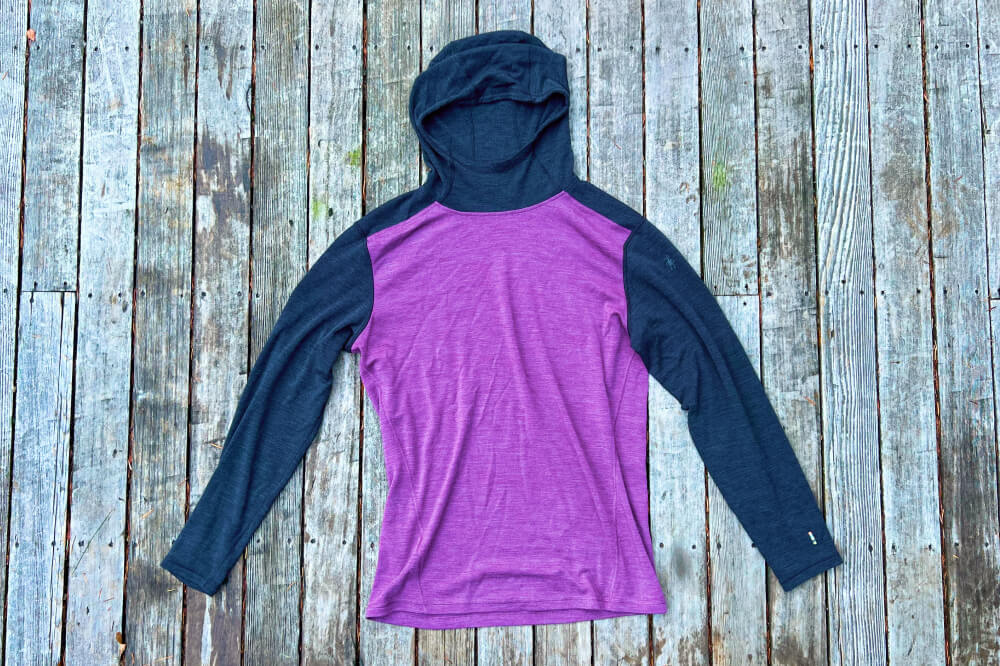
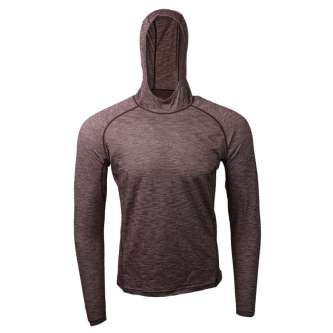
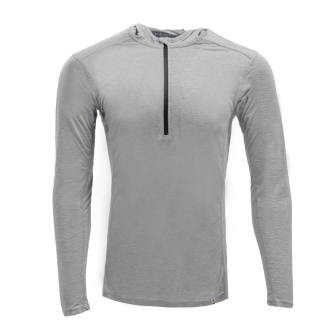
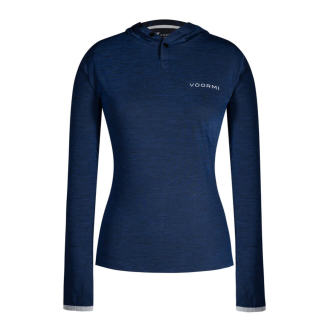
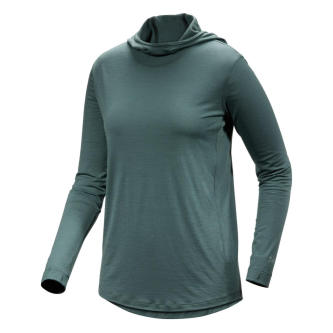
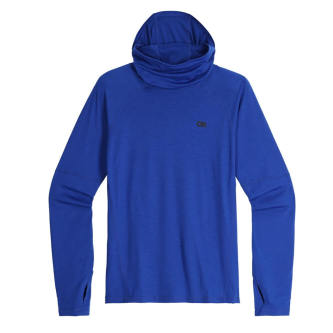
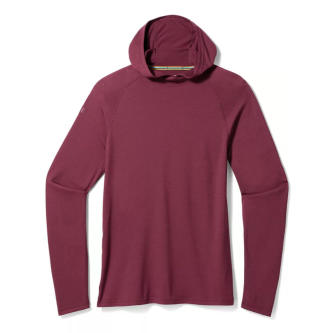
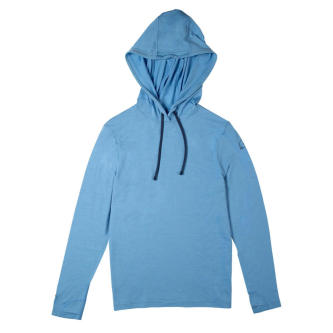
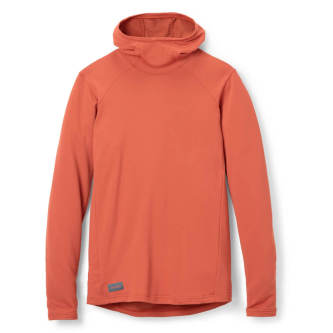
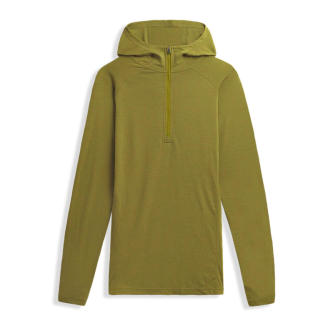
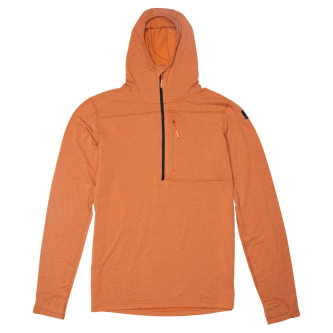
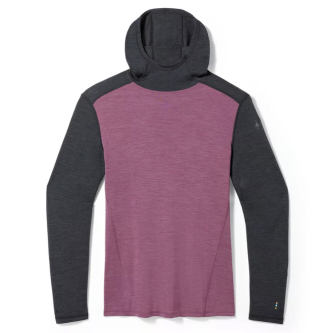
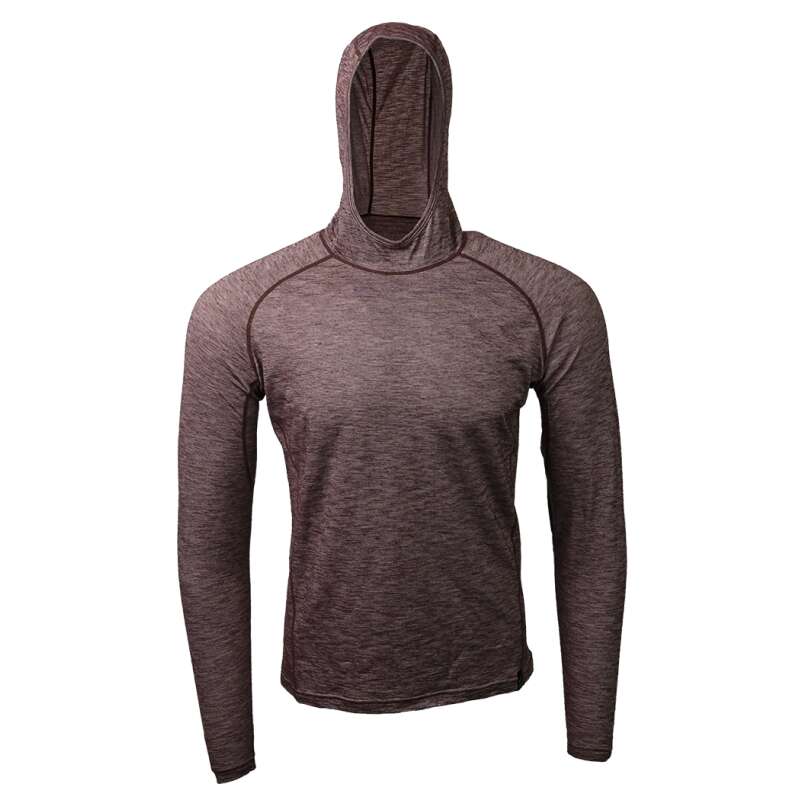
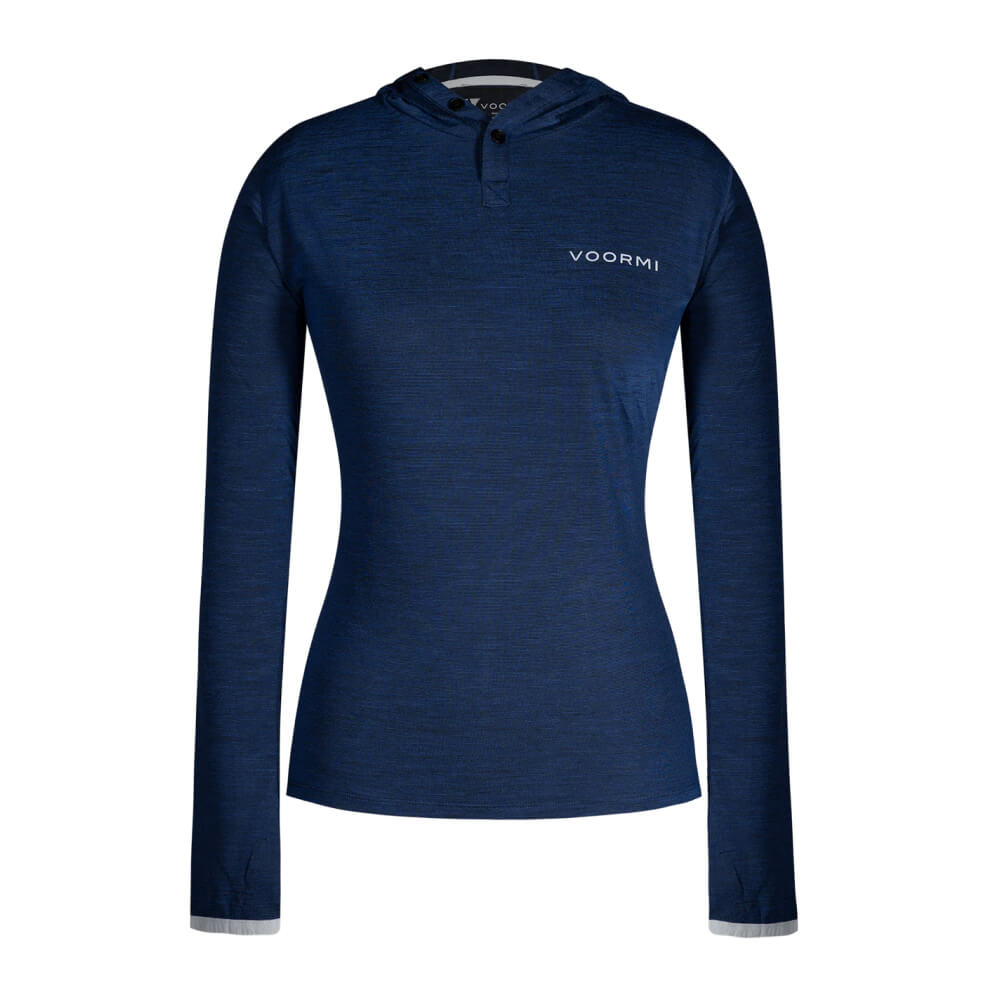
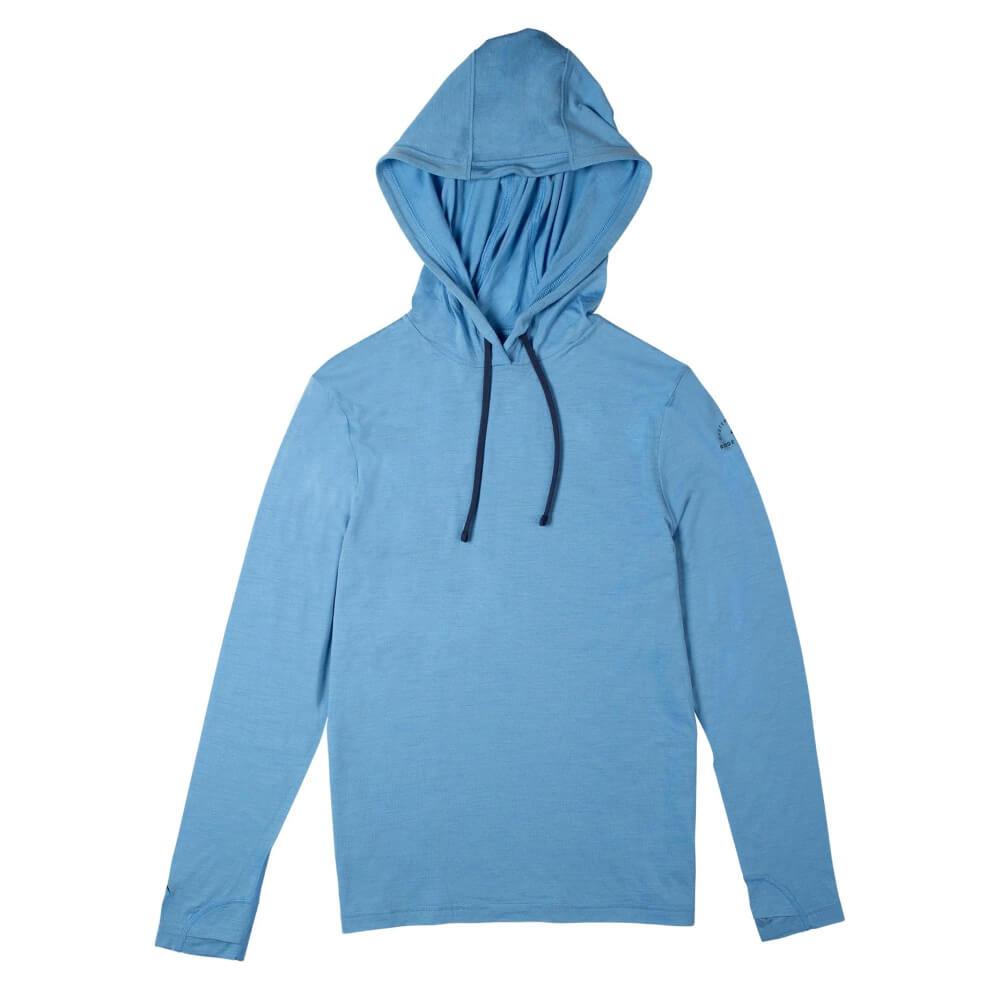
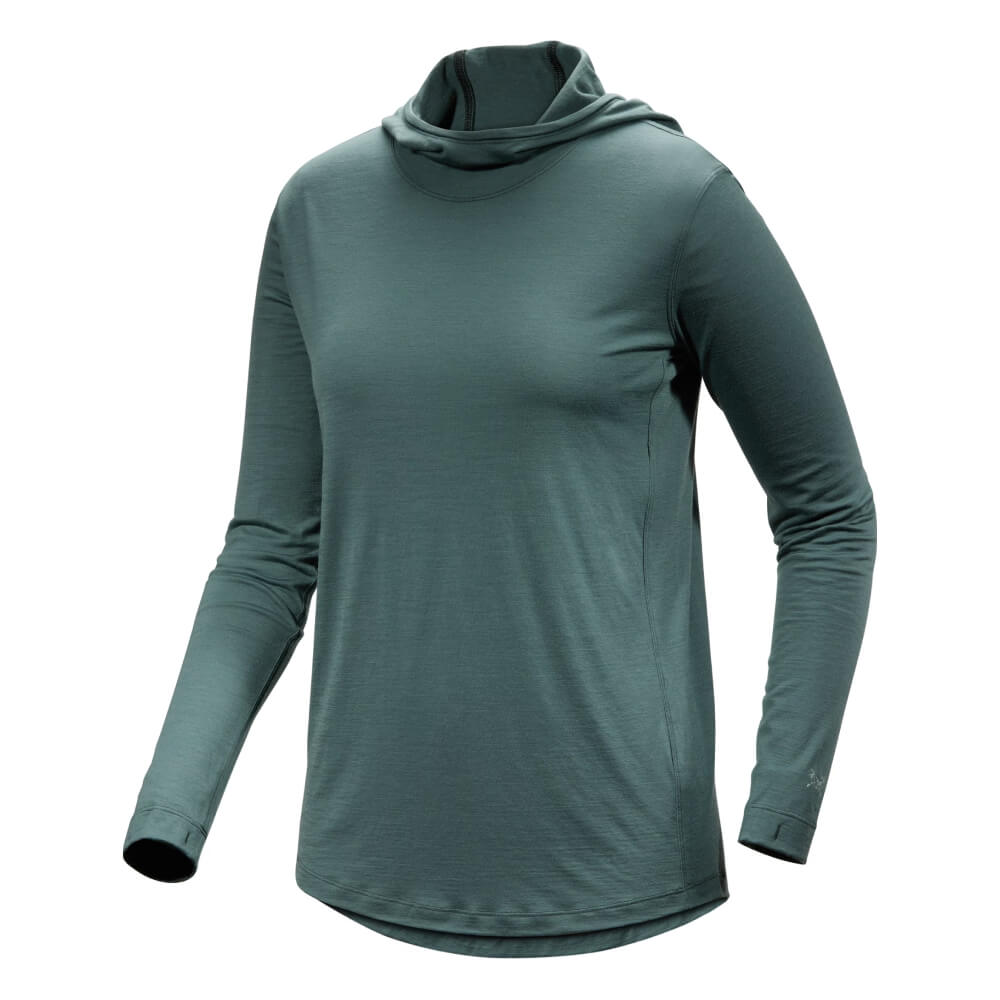
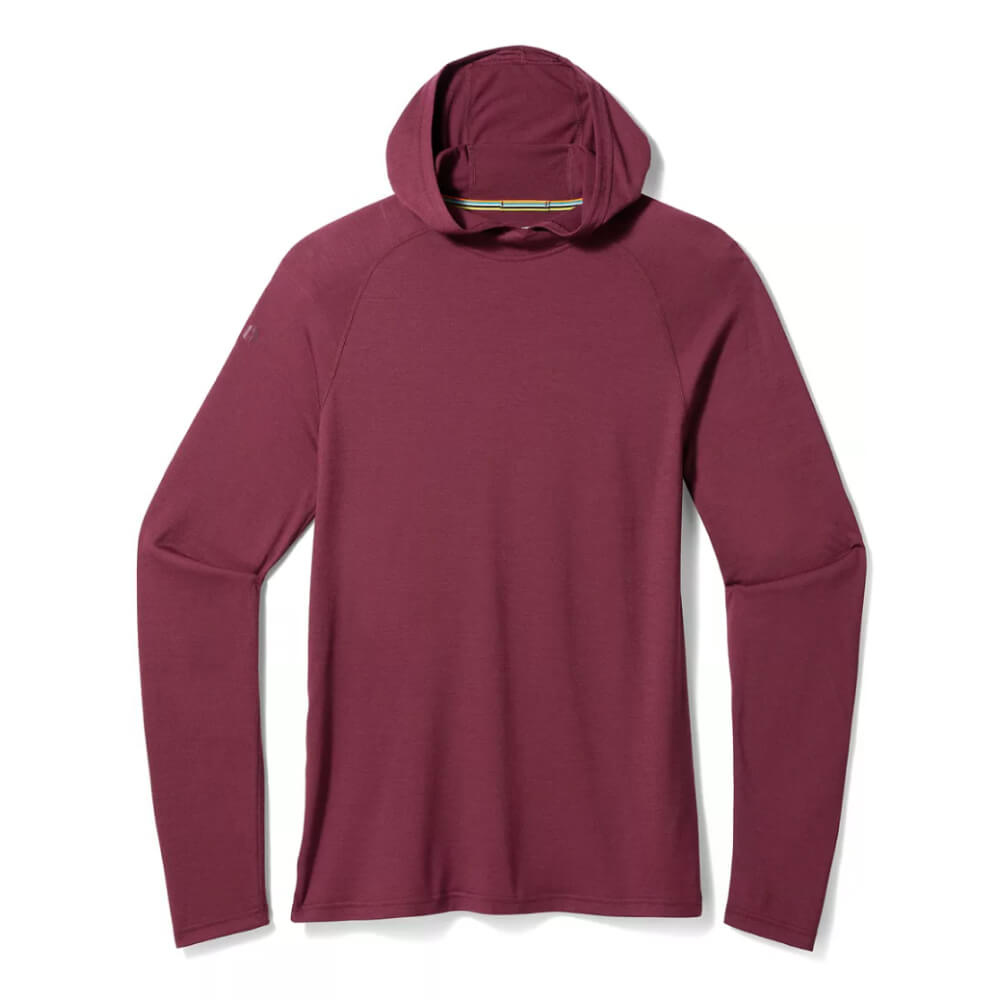
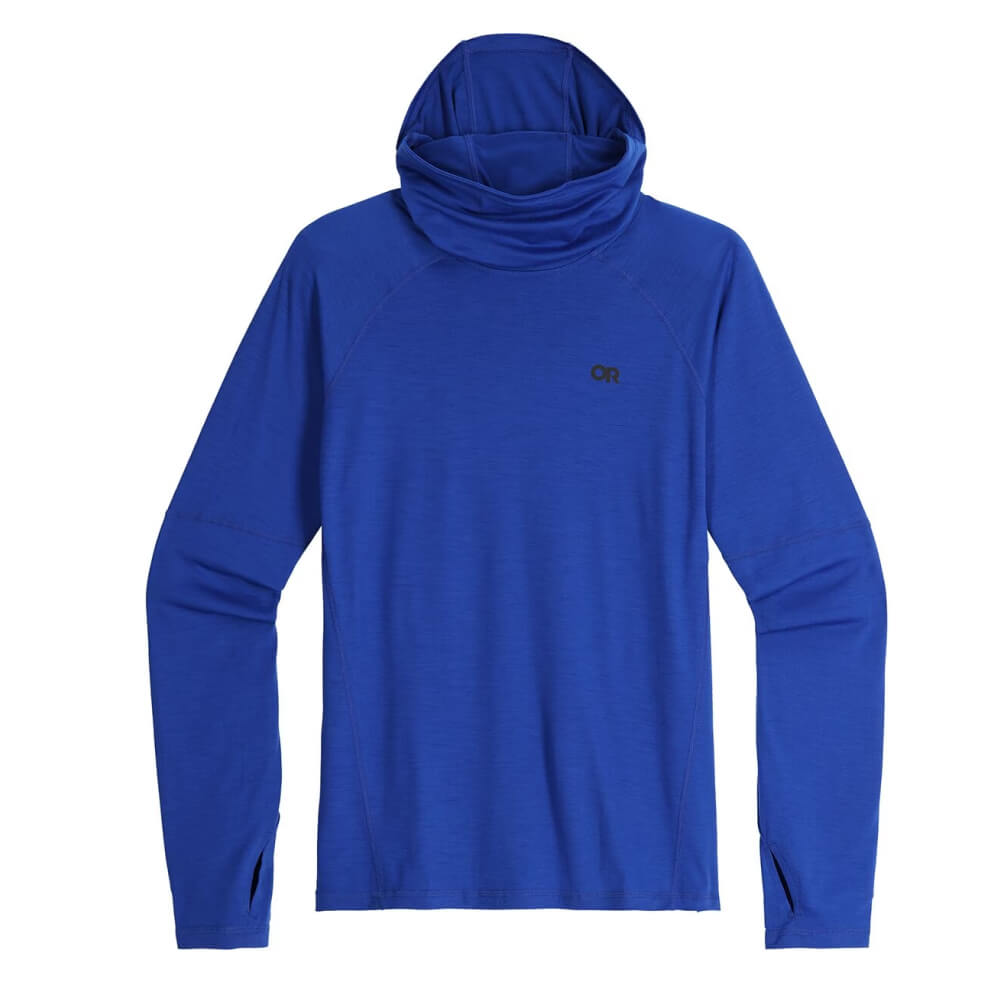
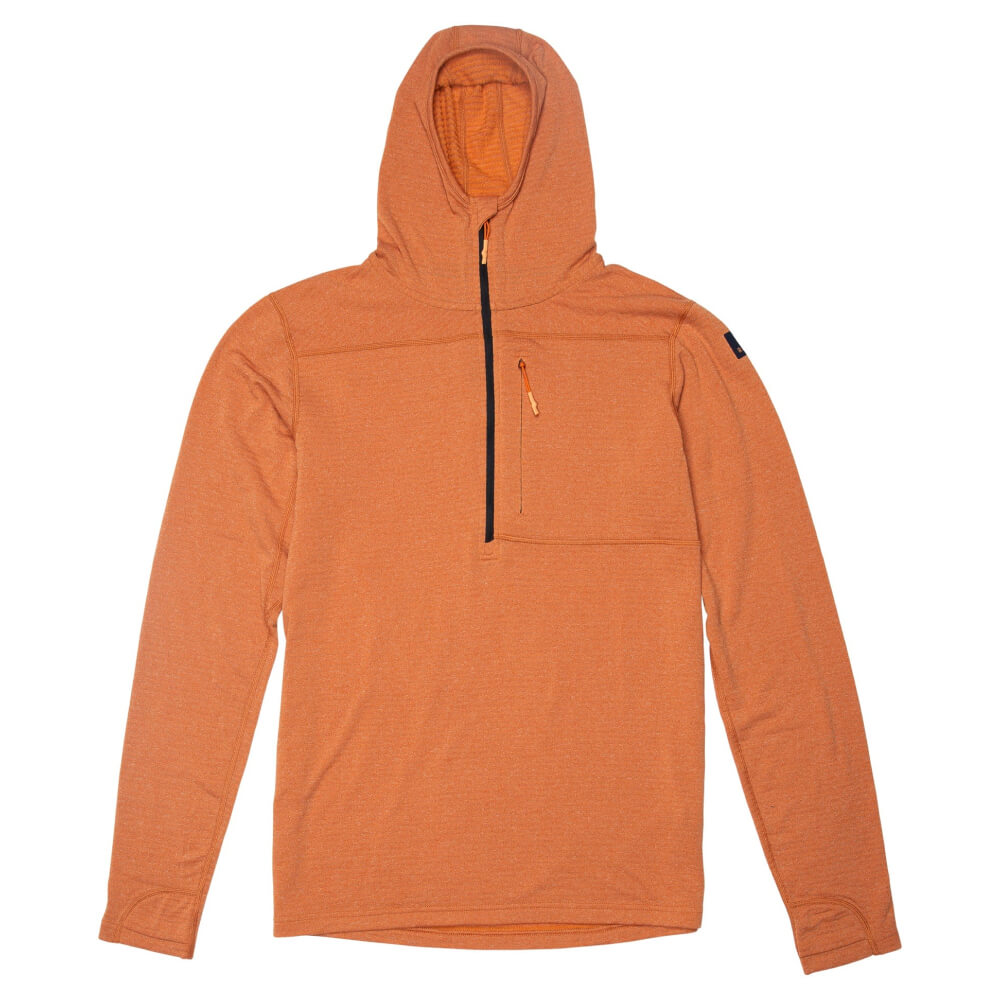
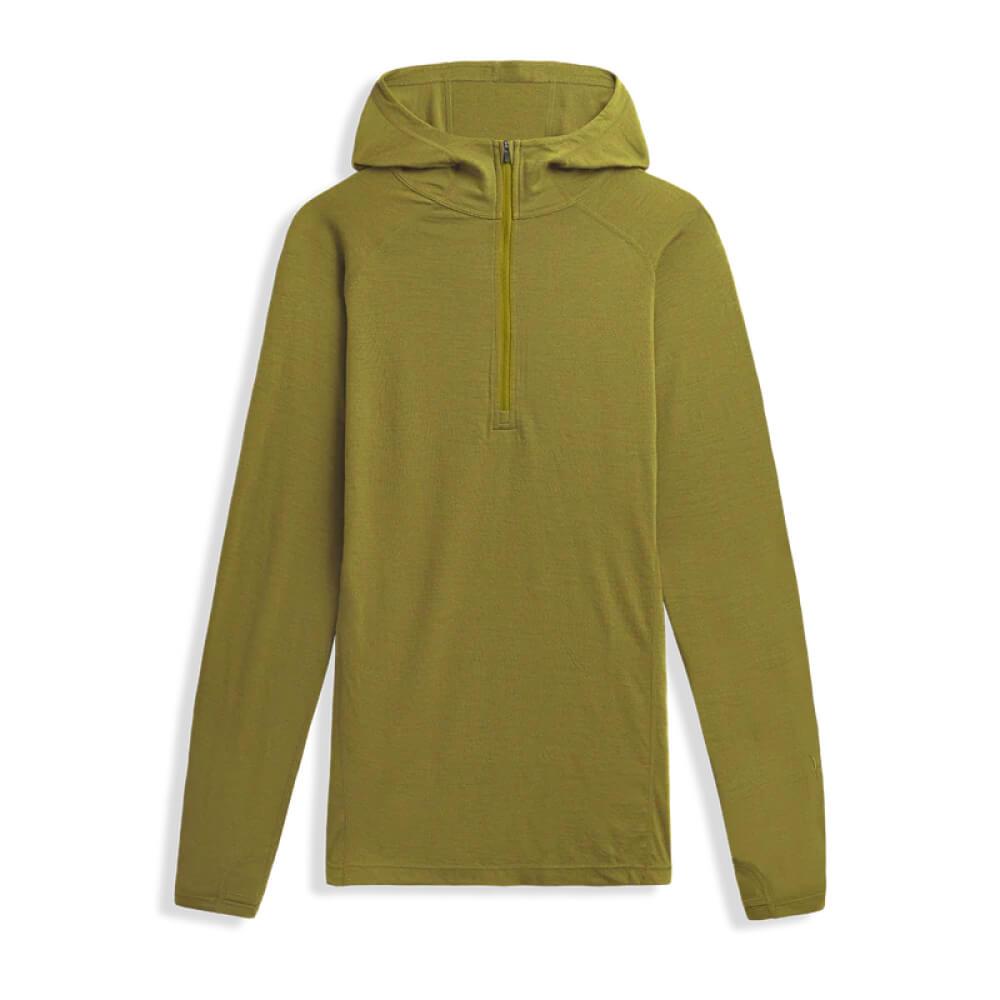
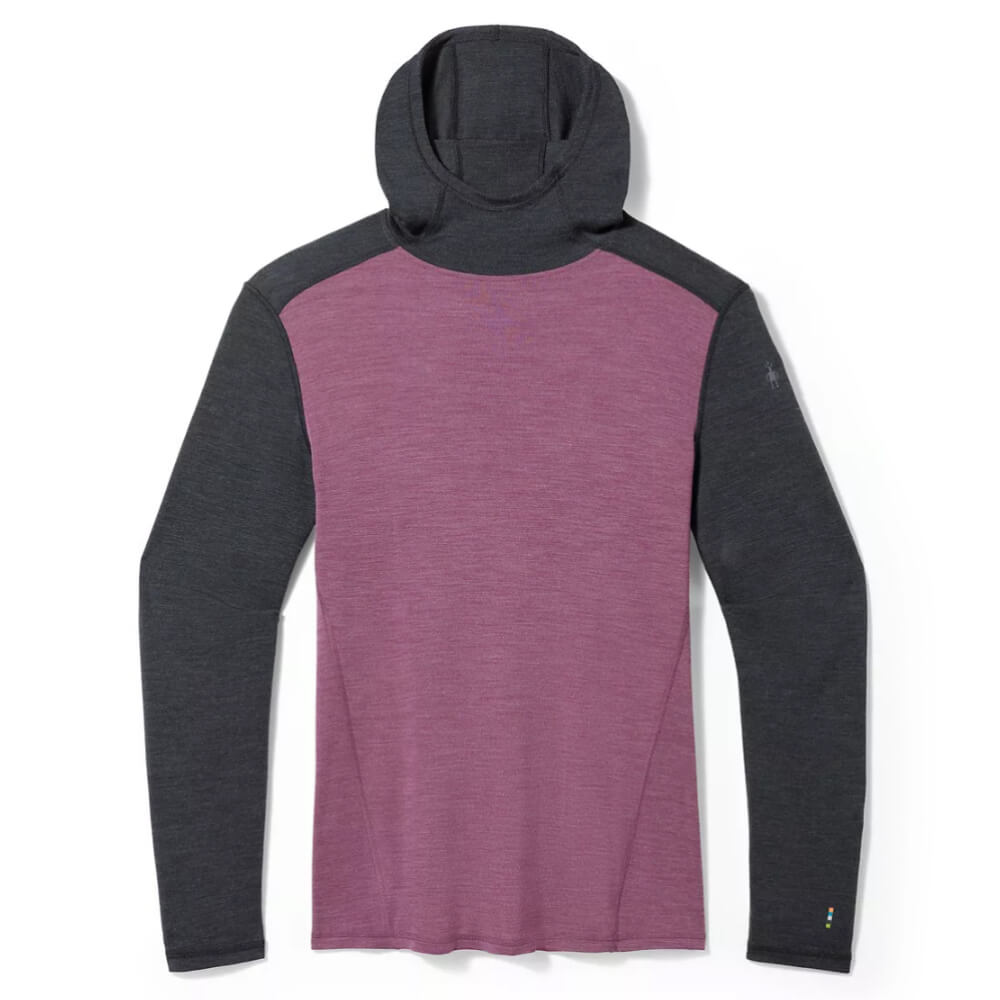
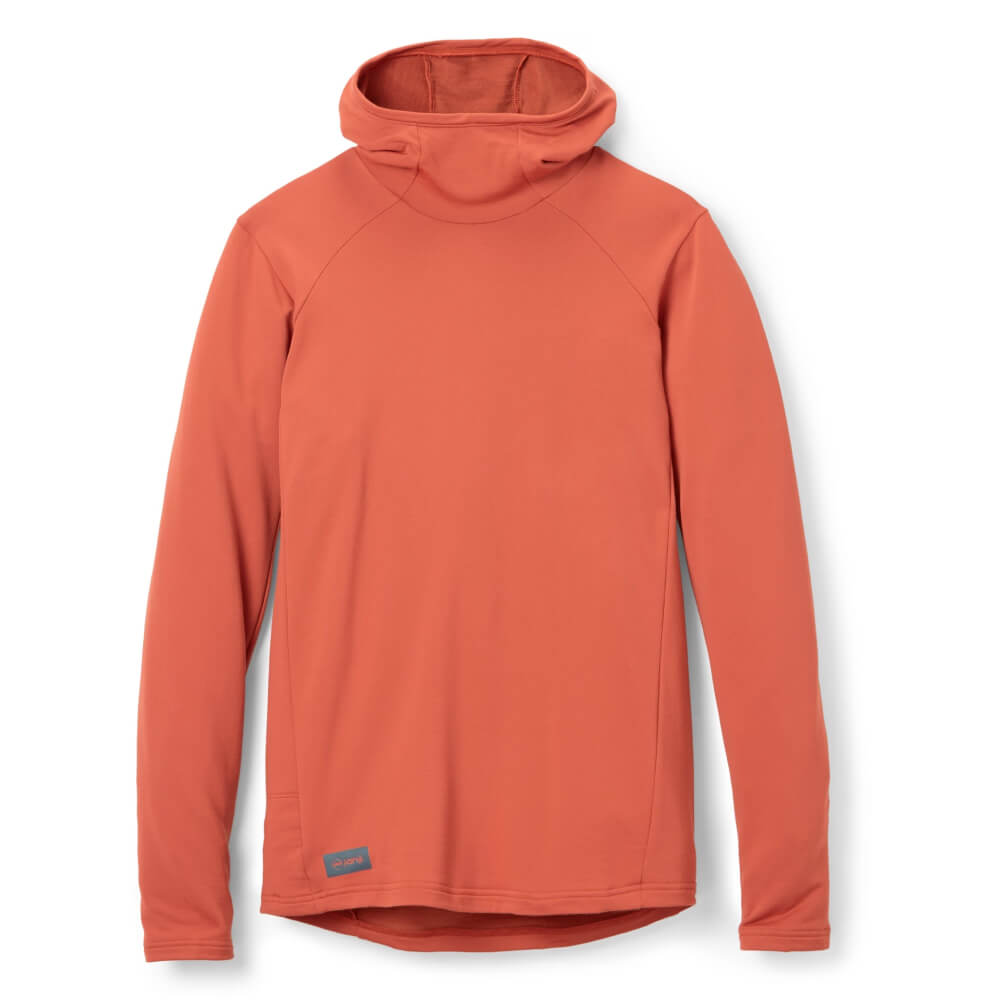
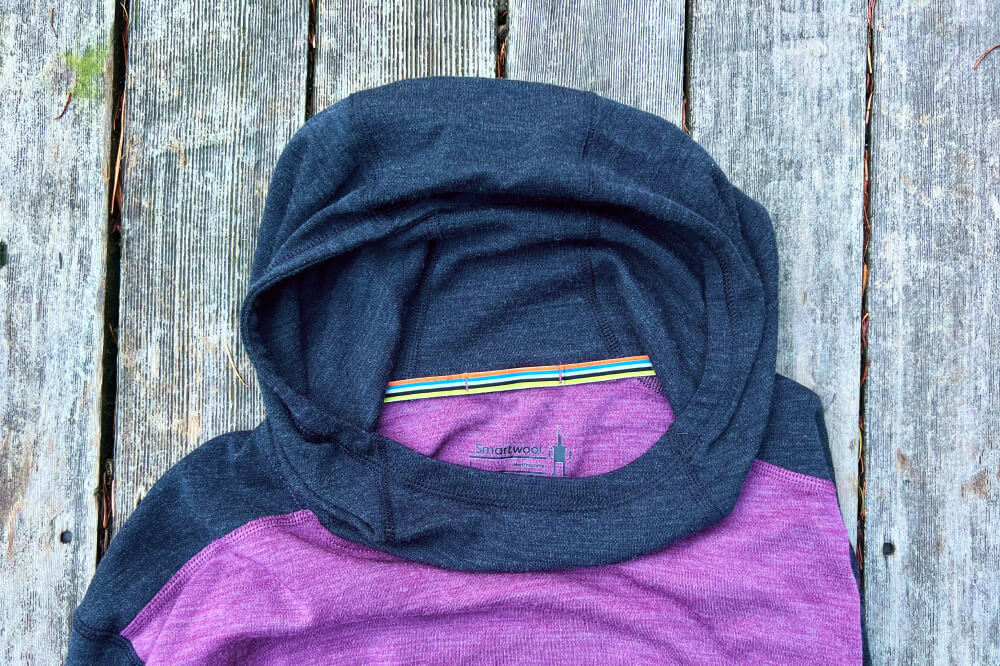


Leave a Reply
Want to join the discussion?Feel free to contribute!